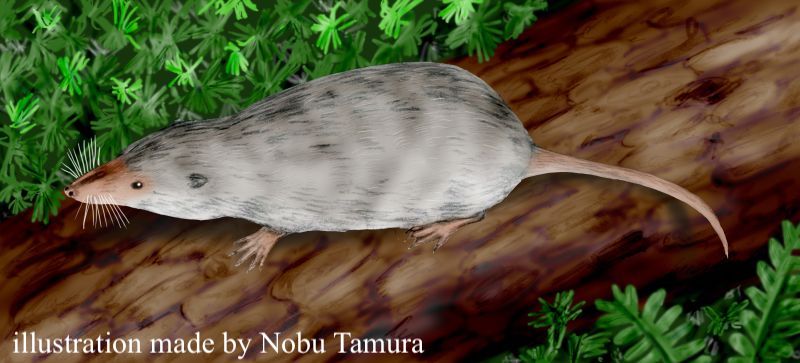Welcome to Adelobasileus

Name Definition
Unknown/obscure king
Name Given By
Spencer G. Lucas and Adrian P. Hunt in 1990
Location
Tecovas Formation in western Texas, U.S.
Classification
Synapsida, Therapsida, Cynodontia, Mammaliamorpha
Size
full body length unknown, but the skull is about 17 mm long
Temporal Range
Norian stage of the Late Triassic, around 225 million years ago
Ecological niche
small insectivore
Species/Sub Species
A. cromptoni
Diet
given it is convergent with a shrew, it is plausible that Adelobasileus was an insectivore and consumed insects such as beetles
Introduction
Adelobasileus is a genus of extinct shrew-like proto-mammals that lived in Texas during the Late Triassic. Adelobasileus means “obscure/unknown king” which is probably in reference to it being a close relative of the common ancestor of all mammals, making it a “king”, and also because it doesn't stand out in appearance despite its evolutionary significance. The specific name refers to Alfred W. Crompton, the famous South African paleontologist and zoologist.
Examining the skull, especially where the cochlea is housed (the cochlea is the snail-shaped auditory organ in your ear that converts the vibrations from sound waves into nerve messages and sends them to your brain), indicates that Adelobasileus was probably a transitional form between the non-mammalian cynodonts and the mammaliaforms, which includes all the mammals and their closest extinct relatives, filling in the gap of synapsid evolution, and makes Adelobasileus what we call a proto-mammal. Because of this, it is commonly thought that Adelobasileus was a common ancestor of all the modern-day mammals. Though Adelobasileus is considered a mammal through the process of trait-based taxonomy, it actually lies right outside the crown group that contains the true mammals.
Based on the current fossil evidence, Adelobasileus is thought to have looked like a shrew, and based on behavioral extrapolation, Adelobasileus was probably a tiny insectivore that lived their lives under the more dominant animals’ shadows such as basal dinosaurs and other reptiles. It would have probably been prey for larger animals such as the carnivorous herrerasaurid Caseosaurus.